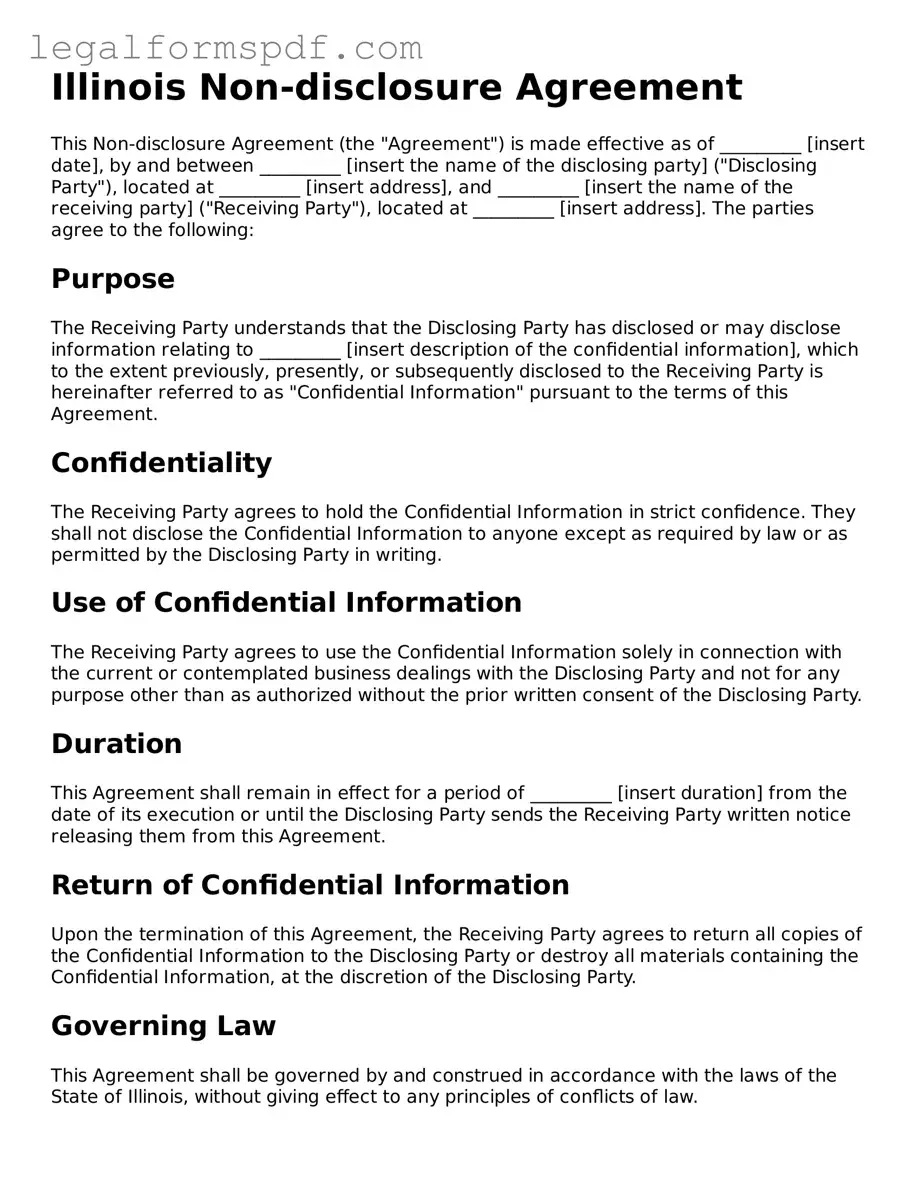Illinois Non-disclosure Agreement
This Non-disclosure Agreement (the "Agreement") is made effective as of _________ [insert date], by and between _________ [insert the name of the disclosing party] ("Disclosing Party"), located at _________ [insert address], and _________ [insert the name of the receiving party] ("Receiving Party"), located at _________ [insert address]. The parties agree to the following:
Purpose
The Receiving Party understands that the Disclosing Party has disclosed or may disclose information relating to _________ [insert description of the confidential information], which to the extent previously, presently, or subsequently disclosed to the Receiving Party is hereinafter referred to as "Confidential Information" pursuant to the terms of this Agreement.
Confidentiality
The Receiving Party agrees to hold the Confidential Information in strict confidence. They shall not disclose the Confidential Information to anyone except as required by law or as permitted by the Disclosing Party in writing.
Use of Confidential Information
The Receiving Party agrees to use the Confidential Information solely in connection with the current or contemplated business dealings with the Disclosing Party and not for any purpose other than as authorized without the prior written consent of the Disclosing Party.
Duration
This Agreement shall remain in effect for a period of _________ [insert duration] from the date of its execution or until the Disclosing Party sends the Receiving Party written notice releasing them from this Agreement.
Return of Confidential Information
Upon the termination of this Agreement, the Receiving Party agrees to return all copies of the Confidential Information to the Disclosing Party or destroy all materials containing the Confidential Information, at the discretion of the Disclosing Party.
Governing Law
This Agreement shall be governed by and construed in accordance with the laws of the State of Illinois, without giving effect to any principles of conflicts of law.
Signatures
IN WITNESS WHEREOF, the parties have executed this Non-disclosure Agreement as of the date first above written.
______________________
Disclosing Party: ______________________
Signature: ____________________
Date: ____________________
______________________
Receiving Party: ______________________
Signature: ____________________
Date: ____________________
